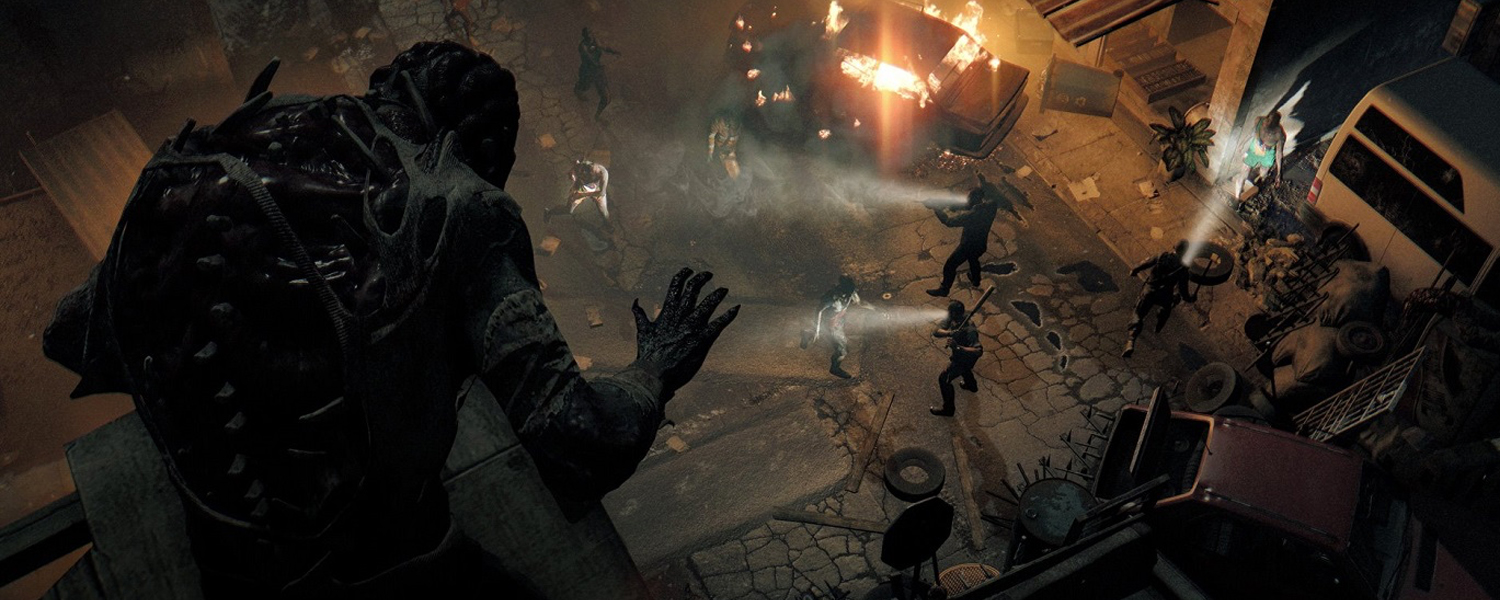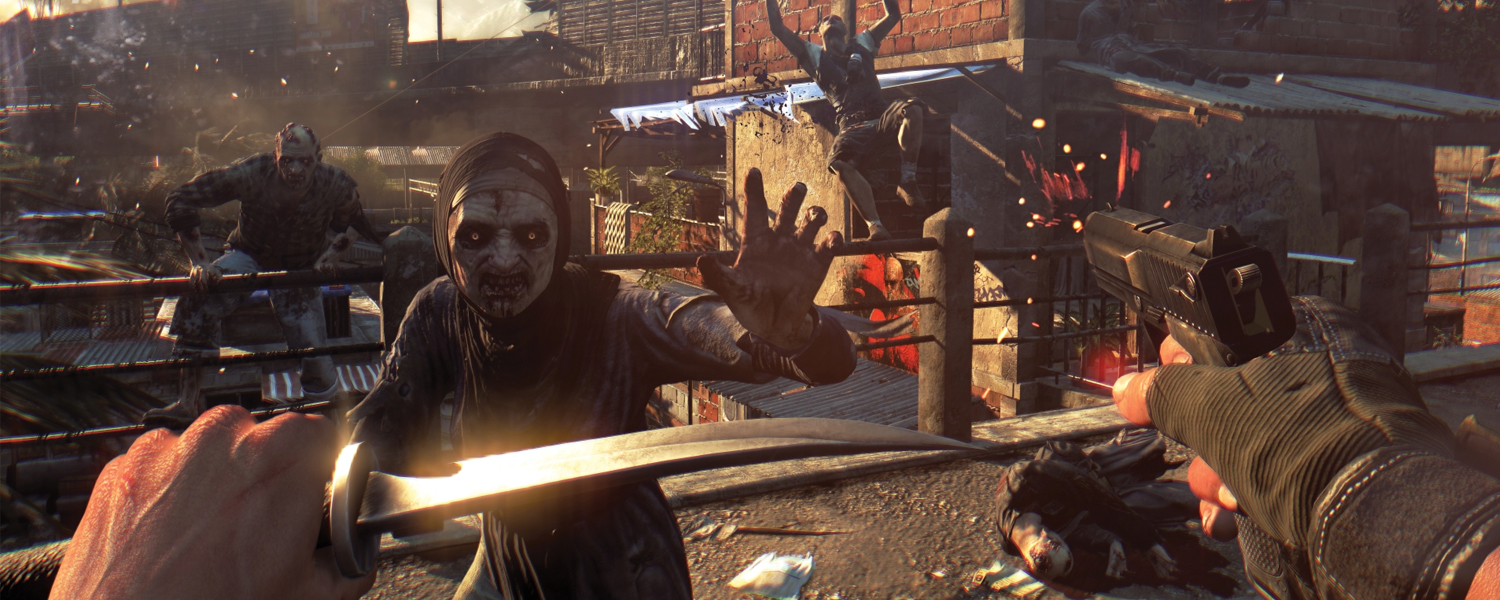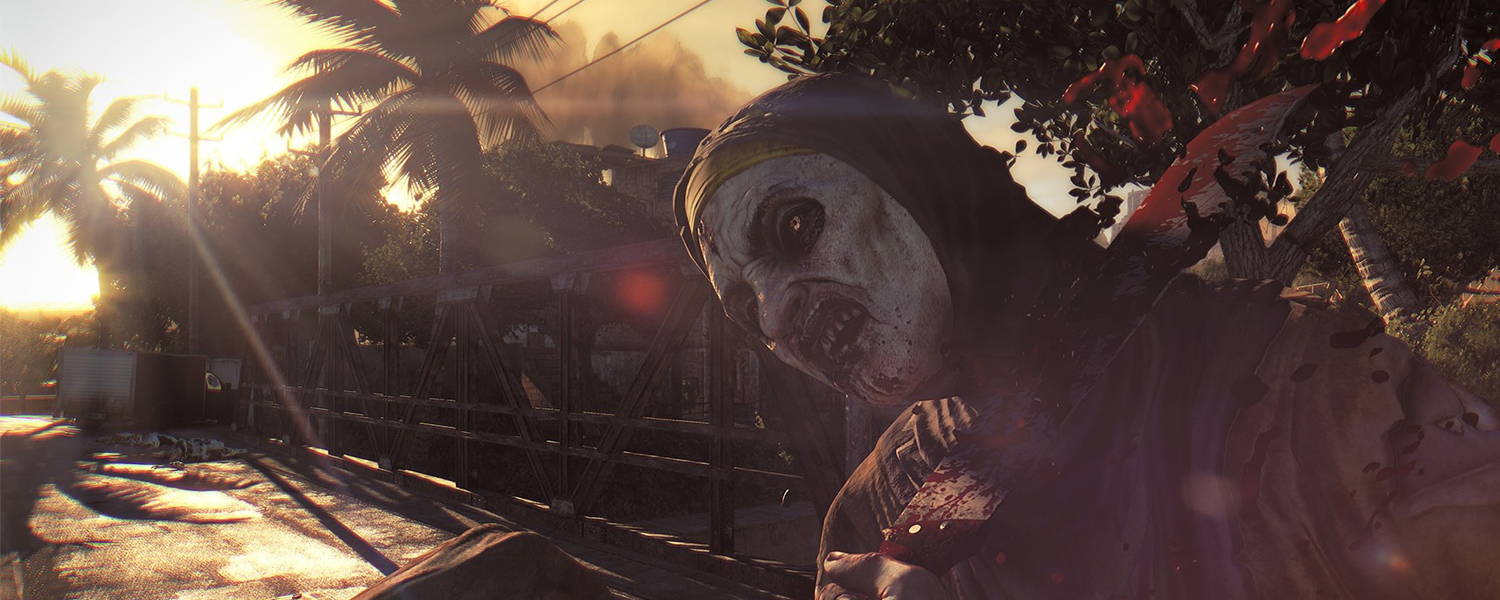
Playing as Kyle Crane, an undercover operative infiltrating the fictional setting of Harran (based off ancient Turkey), ordered to find a file for the Global Relief Effort, supposedly the key to finding a cure for the outbreak of zombies.
Straight off the bat, Dying Light tells a much more serious story than Dead Island, but that’s not necessarily a good thing. Kyle Crane isn’t the worst protagonist in a first person game I’ve seen (looking at you, main guy from Far Cry 4 who I can’t even remember) but he’s not the most intriguing.
While the bulk of the story consists of being everybody’s bitch in order to gain trust and because seemingly everyone else is completely hopeless before Crane came along, it’s refreshing to see the writers directly call out these well worn tropes. Crane at least has a personality that doesn’t consist of blindly following orders and doing completely illogical things for the sake of ‘building trust’, and it’s always good to see him channel how I personally felt about certain people or organisations.
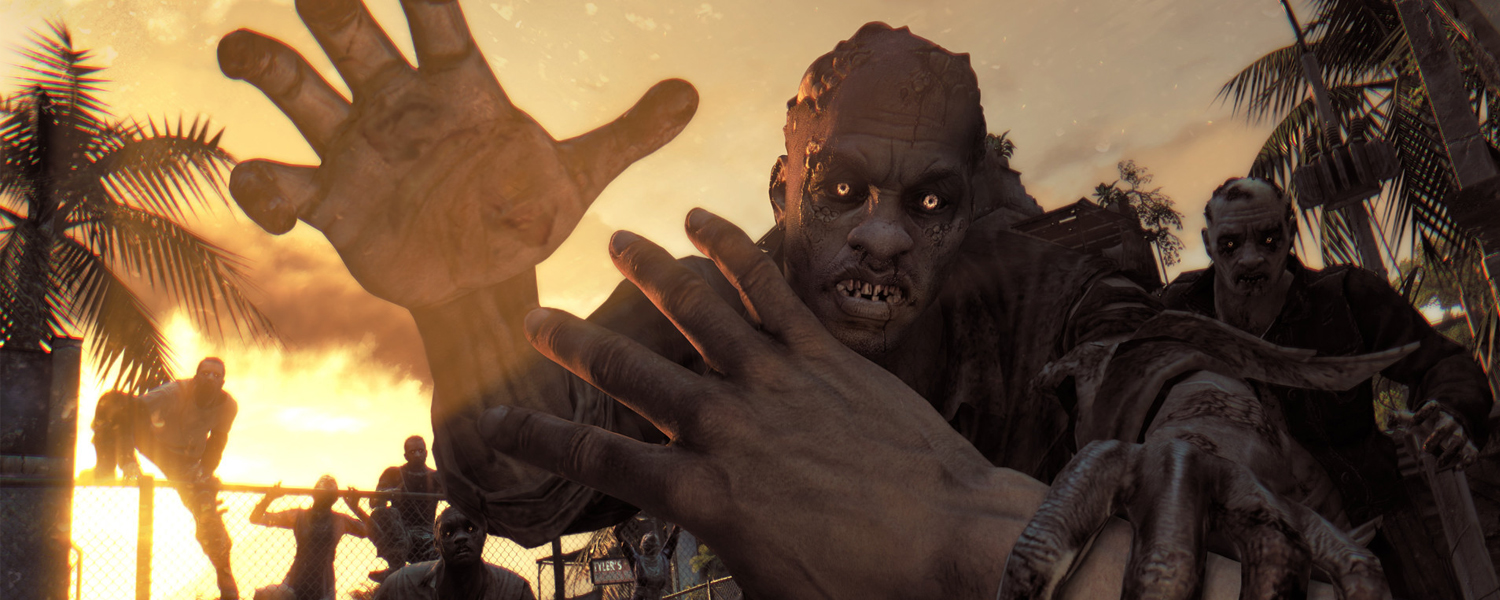 The main villain Rais is completely bland unfortunately, too cartoonishly evil to take seriously, not around enough to remember, and protected with so much plot armour that I found myself seriously frustrated at the story. In one point halfway through the game, where I had half a dozen different guns at the top tier level to use, whenever Rais came on screen it went straight to scripted cutscene, despite the near dozens of opportunities I could have used to kill him.
The main villain Rais is completely bland unfortunately, too cartoonishly evil to take seriously, not around enough to remember, and protected with so much plot armour that I found myself seriously frustrated at the story. In one point halfway through the game, where I had half a dozen different guns at the top tier level to use, whenever Rais came on screen it went straight to scripted cutscene, despite the near dozens of opportunities I could have used to kill him.
Side characters are fairly bland. Allies such as Spike or Brecken are barely there enough to make you care about their side, which is surprising as Brecken is acting as the ‘leader’ of one of the main areas. Most characters are forgettable, but there are some genuinely interesting side quests involving random NPC’s that are well written and don’t just consist of running to places fetching things.
The city (or cities) are the most interesting part of the game thanks to these side quests; they make the setting feel alive, and there are a tonne of easter eggs that are cleverly hidden; finding one is a genuine delight.
 Harran is a big setting, but some poor efforts have been made to make the areas feel bigger; a tonne of content is recycled from the get go. Buildings and rooms are clearly copied and pasted without even changing the dynamics a little, and interactable things like containers, locked chests, and food and weapon items all look the same without the slightest effort to mix things up a little. It’s lucky the gameplay is so solid because it’s possible for people to get quite sick of Dying Light due to the repetitious nature of the environments.
Harran is a big setting, but some poor efforts have been made to make the areas feel bigger; a tonne of content is recycled from the get go. Buildings and rooms are clearly copied and pasted without even changing the dynamics a little, and interactable things like containers, locked chests, and food and weapon items all look the same without the slightest effort to mix things up a little. It’s lucky the gameplay is so solid because it’s possible for people to get quite sick of Dying Light due to the repetitious nature of the environments.
Voice acting is bland and so are characters. Colours are very washed out and muted; the complete opposite of the bright settings of Dead Island’s resorts. It’s a shame that the cities are quite washed out and unremarkable; the gameplay is fun but in the end the setting of Harran is nothing like Dead Island’s Banoi. The second major city is a breath of fresh air though; huge, towering buildings requiring the finest finesse in parkour in order to not die, it’s a genuine thrill to run across these buildings and brush with death.
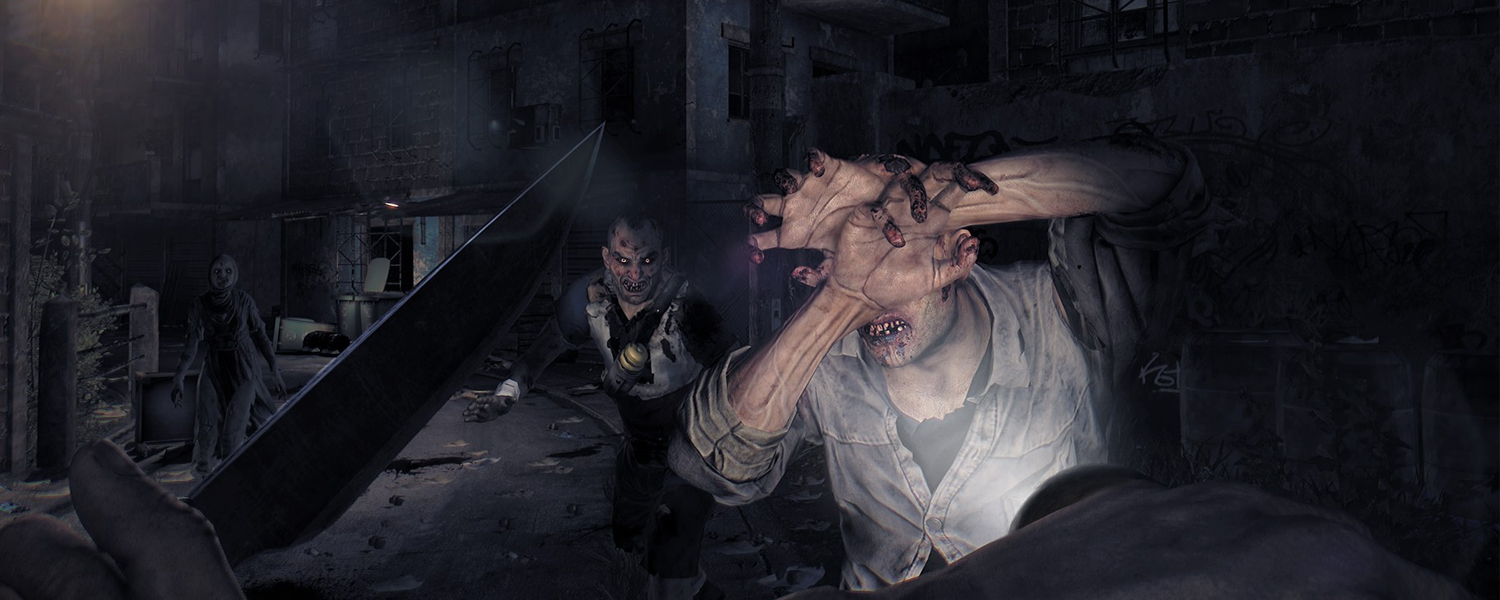 PC performance is passable; for some reason view distance is a huge resource hog, and bumping it down to the lowest setting usually raises a few frames while sacrificing minimal performance. Motion blur, while something I absolutely detest, I could recommend due to the nature of Dying Light; introducing motion blur actually helps the parkour and free running movement look better. Official release states that a GTX 770/AMD HD7970 is needed to run max settings on a healthy FPS, but bumping things down a notch will hopefully get you a steady 50-60FPS. I found the free running movement led to some stutter and indoor environments easily giving me 60FPS while the big cities led to a bit of a drop, but it’s a perfectly playable game on the PC. Otherwise if you can stomach 30FPS the consoles provide a steady framerate at 1080P.
PC performance is passable; for some reason view distance is a huge resource hog, and bumping it down to the lowest setting usually raises a few frames while sacrificing minimal performance. Motion blur, while something I absolutely detest, I could recommend due to the nature of Dying Light; introducing motion blur actually helps the parkour and free running movement look better. Official release states that a GTX 770/AMD HD7970 is needed to run max settings on a healthy FPS, but bumping things down a notch will hopefully get you a steady 50-60FPS. I found the free running movement led to some stutter and indoor environments easily giving me 60FPS while the big cities led to a bit of a drop, but it’s a perfectly playable game on the PC. Otherwise if you can stomach 30FPS the consoles provide a steady framerate at 1080P.

Dying Light employs what could be best described as Dead Island + Mirror’s Edge style of game. Strong focus is given to the decent melee (and sometimes gunplay) combat, but an equal amount of time is given to the free-running/parkour system.
Playing much like an RPG, your character starts off weak and hopeless against crowds of zombies; weapons break like tissue paper, items are scarce and even a one-on-one will leave you exerting all your stamina. The weapons system will definitely feel very restrained at first, as not only you need metal parts to repair weapons, each one has a very limited number of repairs before being permanently broken and becoming useless. It feels like a true survival horror in the first quarter, as you desperately scrounge for weapons to level up your skill trees as quickly as you can. Taking a page from Oblivion, you have three different skill trees that gain XP based on what you do. Direct combat will raise XP in the combat tree, parkour and free running will raise the agility tree and completing quests and finding supplies will net you survivor points. It’s a clever system that works well here, giving you direct incentive to do side quests, free run across roof tops and engage zombies.
Skills are fleshed out and most are essential to survival. Unlocking parkour skills lets you go from scrambling desperately between buildings to zipping across with grappling hooks in a page taken delightfully from Just Cause 2, vaulting over zombies, tackling them to the ground, dropping further distances, escaping death grips, while combat skills will allow you to break legs, crush skulls, unlock power attacks and raise stamina and combo damage. Survivor skills focus mainly on crafting DIY items like grenades, bombs, shields, throwing weapons and traps, and lowering buy prices for weapons from sellers.
While I’m glad that most skills are not only useful but really fun to use, it’s a shame there’s not a lot of filler skills, as it’s very easy to reach max level. I reached max level in combat just over halfway through, and after that combat became very boring for me. It would have been nice to have a few filler skills such as percentile differences for damage or small health boosts after max level just to keep the momentum of XP going. The repair system, infuriating at first, soon becomes trivial as you’ll have so many strong weapons that are durable that it really doesn’t become an issue.
In terms of combat, the bulk of the game consists of smashing in a lot of zombie faces with whatever weapon you can get your hands on. Starting off with basic weapons like planks, pipes and knives, by the end you’ll be wielding samurai swords, katanas, axes and other exotic weapons that can easily dispatch a crowd. At level 1 it’ll take a good dozen hits to completely eviscerate a zombie, but by ma level (24) the sheer power of your weapons will have you gleefully running through entire crowds like they were made of butter.
The combat functions very similarly to Techland’s Dead Island, almost too similarly. Strategically knocking off limbs, the slow motion burst that kicks in every now and then and the very visceral gore; everything that was in Dead Island remains the same in Dying Light, with marginal improvements. It’s still absolutely satisfying to kill zombies and the improved graphics and gore makes it even better. The dozens of weapons available means there’s a tonne of variety in how to dispatch of zombies. Whether to use a slow swinging two handed weapon for devastating damage or to use an up close short knife for extreme speed but lesser damage and higher chance of being attacked, I settled for strong one handed weapons that carried me from start to finish, as I felt two handed weapons were far too slow especially dealing with crowds.
There’s a tonne of loot to pick up, and most of it will be either money or materials to forge weapon upgrades, adding several effects such as fire, electricity or poison to attacks. I really felt an ‘area loot’ pick up option would have come very useful, as killing a horde of zombies results in hundreds of bodies with loot, and having to loot one at a time quickly grows tiresome. True to RPG form weapons are also classed from White grades being the weakest to Orange grades being the best weapons, but whereas in other loot driven games such as Diablo or Borderlands, there is no real sense of rarity to the high class weapons, and eventually they all break permanently anyway.
And just like typical RPG’s, the sidequests make the game. Dozens of dozens of quests, involving clearing areas, fetch quests, picking up herbs, solving mysteries, the majority are incredibly fun to finish and nets you essential survivor points, blueprints for weapon mods and money. Challenges exist as well; parkour challenges have you beating the clock or grappling your way across the city through a series of checkpoints and kill challenges have you armed with the best weapons in order to kill as many zombies as possible. The main story may have a few problems due to the weak plot and weak characters, but these problems don’t exist in the sidequests.
Special zombies exist to break the flow. Brutes take and give a tonne of damage and are practically immoveable, requiring a lot of strategic combat to take them down without being downed yourself. There are sprinting zombies that can chase you across and up buildings, kicking them and watching them fall to the ground is hilariously fun thanks to the physics system, bloated zombies that shoot poison blobs at you, suicide zombies that can kill you with one explosion and giant ramming infected that are nigh indestructible.
The parkour is just as fun, especially in the early stages where weapons are scarce and weak. Upgrading to top tiers so you can sprint, tuck and roll and vault over zombies without breaking the rhythm is incredibly fun. And it all ties into the incredibly fun trap system. Cars are rigged to blow up, spikes are littered all across walls, floors and on barrels and poles; my favourite attack was a jump kick, sending zombies flying impaled into a spike on a wall. It feels like a better version of Dark Messiah’s widely acclaimed combat system, and it’s incredibly fun. While games like Assassin’s Creed never managed to nail that sense of momentum and speed, Dying Light can join the ranks of Mirror’s Edge of games that really get parkour right.
The day/night cycle, widely touted by Techland to be a game changer isn’t quite what it’s hyped to be but it’s still a lot of fun. Night only lasts 7 minutes, but during early levels 7 minutes feels like an eternity, as the game turns into a pseudo-stealth genre. Volatiles come out at night, and they are possibly the toughest enemies in the game, able to sprint indefinitely after you and capable of killing you with a few swipes. Avoiding them is essential during early levels, and even in max levels they require a tremendous amount of effort and strategy to bring down. Playing at night was something I avoided at the start, as I wasn’t strong enough to last more than a couple of minutes, but soon enough it became less terrifying and very fun. Skill points are doubled at night, and when you hit high levels you need those extra points to level up. Starting a pursuit, luring volatiles and infected to a trap and setting it off nets thousands of points, and it’s very satisfying to survive a full night.
The story will take a solid 10-15 hours to complete, but the bevy of interesting sidequests and speed/kill challenges will net at least 50 extra hours. It’s a game that will definitely reward you if you spend enough time with it.




